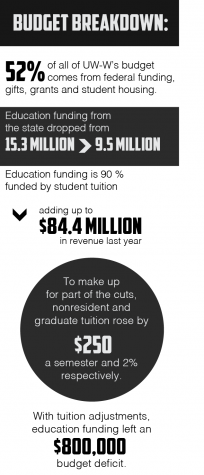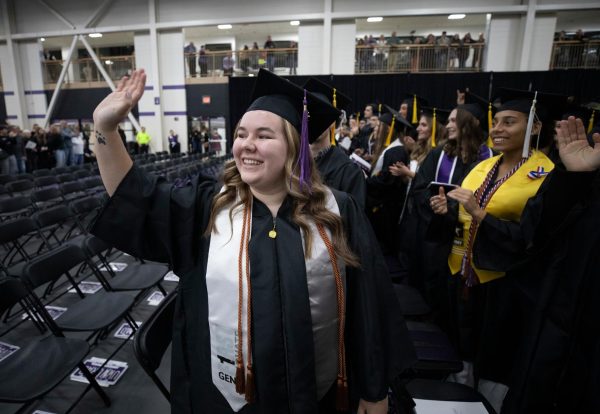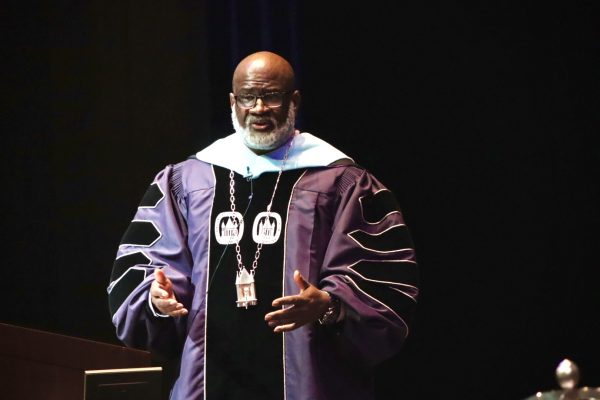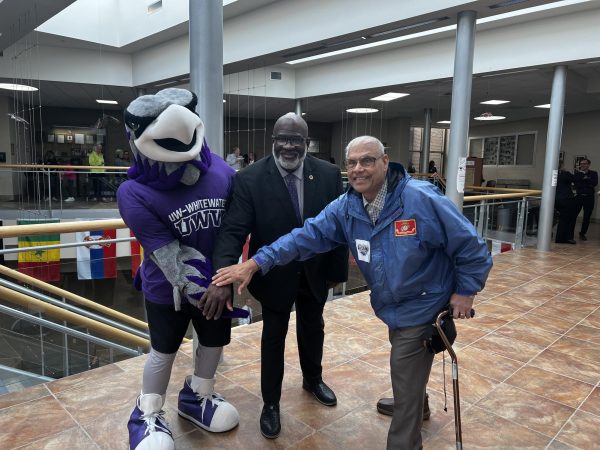UW-W enters year with budget surplus
Fund reallocation alleviates ’15-17 biennial budget cuts
October 7, 2016
Last year, University of Wisconsin-Whitewater officials were facing an unbalanced budget situation and were anticipating a necessary $1 million dip into cash reserves just to keep instruction going during the 2016-17 academic year.
However, just a few weeks into the academic year, Vice Chancellor for Administrative Affairs Jeff Arnold says actions taken in the past year by the university, increasing enrollment and an additional fringe benefit reallocation from the UW System nullified that need.
“The reductions that we took in the last budget lowered our expenses, so we don’t have a structural deficit to maintain,” Arnold said. “We’re in a pretty good place right now.”
The ’15-17 biennial budget for the state of Wisconsin, signed by Gov. Scott Walker in July 2015, dealt the UW System a $250 million cut in state funding for educational purposes, which resulted in a $5.8 million dollar, or 38 percent, cut in education funding for UW-Whitewater.
“The budget cuts were difficult, but UW-Whitewater did very well,” Arnold said. “Some of our sister institutions who experienced declining enrollments had sort of a double-whammy, but our enrollments have been increasing … that’s helping us weather the storm.”
Chancellor Beverly Kopper made mention of the unavoidable budget crisis during her State of the

University addressed last month, acknowledging her pride in how the university managed the cuts bestowed upon them.
“As a campus we navigated situations that were beyond our control, including the reduction in state funding,” Kopper said. “I will continue to stress to legislators, the community and business leaders that it is time for the state to reinvest in higher education.”
At her State of the University, Kopper broke down the new budget numbers:
• The UW System reallocated close to $666,000 back to UW-W of fringe benefits for employees, which created a positive balance of $536,000.
• $83,971 of the surplus went towards salary adjustments for faculty and staff.
• Another $300,000 will be split between faculty, academic staff and university staff, each department receiving $100,000 for their employees.
• The remaining funds, around $150,000, will be used for employee retention.
The casualties of the budget cuts remained the same as projected around this time last year: 40 faculty positions stayed vacant (and were managed sans layoffs and retirement incentives), a tuition rate adjustment resulted in a price rise in both nonresident and graduate school costs and classes and course selections were placed on the chopping block.
Arnold said some of the costs needed to be spread around to minimize any harmful impact from the budget. However, a freeze on undergraduate tuition for Wisconsin residents placed the cost on those who didn’t grow up as native Cheeseheads or who are working towards post-baccalaureate education.
Faculty have also taken a hit on their paychecks by not receiving “deserved” salary increases, Arnold said.
“I think folks understand that costs go up, and some of those costs have to be passed on – right now, we’re in a place where [Wisconsin] resident undergraduate tuition has been frozen for several years,” Arnold said. “Again, that puts additional strain on the university because our costs increase while our revenue stays flat … the freeze is especially difficult for an institution that’s heavily tuition-funded.”
In addition to the faculty cuts, course offerings and the tuition adjustment, Arnold said part of the budget crisis’ solution would be enrollment growth. 82 more students enrolled on the tenth day of classes than last year, according to a university news release. More students allowed for $800,000 more in tuition to flow into UW-W, but with limited space in residence halls for new freshman students, University Housing Director Frank Bartlett said the growth rate remains stifled below UW-W expectations.
The budget cut also meant having an essentially zero balance for the campus’ capital budget, which funds structural repairs and improvements on campus property. With little to no state funding for costly projects on campus such as full roof repairs on buildings like Upham Hall and Andersen Library which require at least six-figure funding, the university can only financially manage to do needed patchwork with UW-W resource fundings.
Arnold said UW-W is in the process of creating their budget to be factored into the state’s ’17-19 biennial budget.
Growing pains
The campus wants to grow. It has the ability to grow academically, as Arnold said last year in a Sept. 30 Royal Purple article, but Bartlett has to assist with reigning in the campus’ growth ambitions.
“Any time you’re looking at an increase in student population on campus, there’s an impact to the residence halls,” Bartlett said. “One of the reasons we’ve been telling the campus ‘you can’t grow as you wanted to’ is because of the amount of room we have available … I know the campus wants to grow, but doing a leap of 100 [more students] would have been challenging.
Bartlett said only around 20 students were living in residence hall lounges when the school year started, down from approximately 170 the year prior, thanks to Arey and Fricker Halls being back as an option for students.
The campus will have an opportunity to expand come Fall 2019, as the newest residence hall, currently in the designing phase, will become an option for students. Not only will the new living option open up more space for higher enrollments, but it will allow for more of the existing residence halls to be taken offline for needed renovations and repairs.
Kopper announced Walker’s decision to sign off on the residence hall once again at the State of the University address.
“Just last week, our campus received final approval once again on our new residence hall, which is vital … to our continued growth and economic development,” Kopper said.





















